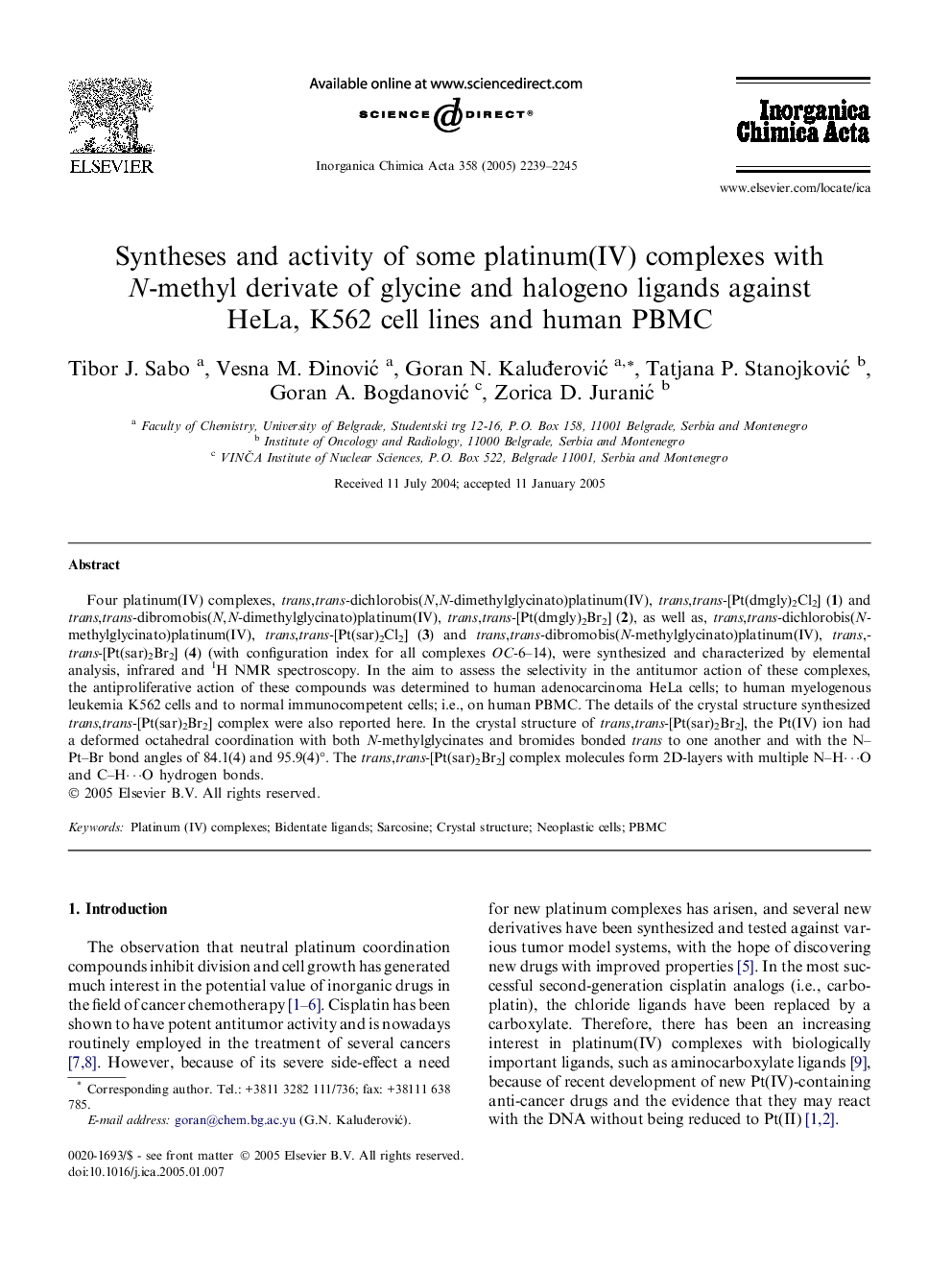| Article ID | Journal | Published Year | Pages | File Type |
|---|---|---|---|---|
| 1308572 | Inorganica Chimica Acta | 2005 | 7 Pages |
Four platinum(IV) complexes, trans,trans-dichlorobis(N,N-dimethylglycinato)platinum(IV), trans,trans-[Pt(dmgly)2Cl2] (1) and trans,trans-dibromobis(N,N-dimethylglycinato)platinum (IV), trans,trans-[Pt(dmgly)2Br2] (2), as well as, trans,trans-dichlorobis(N-methylglycinato)platinum(IV), trans,trans-[Pt(sar)2Cl2] (3) and trans,trans-dibromobis(N-methylglycinato)platinum(IV), trans,trans-[Pt(sar)2Br2] (4) (with configuration index for all complexes OC-6–14), were synthesized and characterized by elemental analysis, infrared and 1H NMR spectroscopy. In the aim to assess the selectivity in the antitumor action of these complexes, the antiproliferative action of these compounds was determined to human adenocarcinoma HeLa cells; to human myelogenous leukemia K562 cells and to normal immunocompetent cells; i.e., on human PBMC. The details of the crystal structure synthesized trans,trans-[Pt(sar)2Br2] complex were also reported here. In the crystal structure of trans,trans-[Pt(sar)2Br2], the Pt(IV) ion had a deformed octahedral coordination with both N-methylglycinates and bromides bonded trans to one another and with the N–Pt–Br bond angles of 84.1(4) and 95.9(4)°. The trans,trans-[Pt(sar)2Br2] complex molecules form 2D-layers with multiple N–H⋯O and C–H⋯O hydrogen bonds.
Graphical abstractFour platinum(IV) complexes, trans,trans-dichlorobis(N,N-dimethylglycinato)-platinum(IV), trans,trans-[Pt(dmgly)2Cl2] (1) and trans,trans-dibromobis(N,N-dimethylglycinato)platinum(IV), trans,trans-[Pt(dmgly)2Br2] (2), as well as, trans,trans-dichlorobis(N-methylglycinato)platinum(IV), trans,trans-[Pt(sar)2Cl2] (3) and trans,trans-dibromobis(N-methylglycinato)platinum(IV), trans,trans-[Pt(sar)2Br2] (4) (with configuration index for all complexes OC-6–14), were synthesized and characterized by elemental analysis, infrared and 1H NMR spectroscopy. The antiproliferative action of these compounds was determined to human adenocarcinoma HeLa cells; to human myelogenous leukemia K562 cells and to normal immunocompetent cells; i.e., on human PBMC. In the crystal structure of trans,trans-[Pt(sar)2Br2], the Pt(IV) ion had a deformed octahedral coordination with both N-methylglycinates and bromides bonded trans to one another and with the N–Pt–Br bond angles of 84.1(4)° and 95.9(4)°.Figure optionsDownload full-size imageDownload as PowerPoint slide
